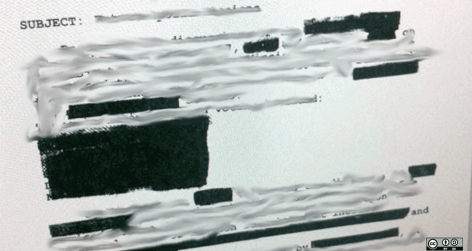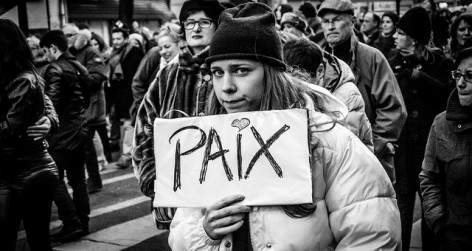A primeira edição da revista desde o ataque no qual foram assassinadas 12 pessoas apresentou um cartoon de Mohamed na capa. Myriam Francois-Cerrah contesta.

Nunca fui fã do Charlie Hebdo – o seu humor é muitas vezes demasiado indecente para o meu gosto e eu concordo com um dos seus antigos empregados, Olivier Cyran, que acha que em anos recentes resvalou com frequência para caricaturas racistas, reforçando um ambiente que já era tóxico para os muçulmanos franceses.
Para uma revista alegadamente contestadora, não desafiou, e frequentemente apoiou, as bem-documentadas crescentes restrições às liberdades básicas dos muçulmanos. Também usava os tipos de estereótipos racistas nas suas imagens alimentando precisamente o tipo de atitudes racistas que diziam querer desencorajar. A uma dada altura, a pretensão de ser antirracista tem de ser diminuída se os sujeitos do racismo – as minorias propriamente ditas – dizem-lhe que está a ser racista. Ignorar a sua voz é, no mínimo, uma forma dúbia de antirracismo.
O meu tipo de sátira é do tipo que briga, do tipo que pede contas aos poderosos e troça da autoridade – há uma grande diferença entre troçar da classe clerical que governava a França através do acesso privilegiado ao poder e troçar da fé dos descendentes dos imigrantes a grande parte dos quais está trancada fora do poder experimentando níveis agudos de preconceito.
A edição memorial front cover incomoda-me apenas por uma razão que é o emprego de estereótipos raciais para representar o profeta Mohamed, uma abreviatura dos árabes e muçulmanos em geral. Nós (felizmente!) não aceitaríamos uma imagem de um judeu com nariz de gancho, portanto não é claro para mim porque é que as imagens de árabes com o nariz em gancho – porque, vamos esquecer quem é o profeta Mohamed para os muçulmanos, ele é um homem árabe retratado em termos raciais estereotipados – não são mais perturbadoras para outros. Uma das minhas caricaturas preferidas de Charlie Hebdo é uma que representa o profeta Mohamed a ser decapitado por um extremista. A imagem capta perfeitamente o sequestro da religião pelos radicais e a verdade de que os muçulmanos são as principais vítimas de terrorismo e o principal alvo de violência retaliatória.
Myriam Francois-Cerrah é uma escritora e jornalista britânica. Este artigo foi originalmente publicado no The Guardian. Nota do Timothy Garton Ash: de acordo com a política de ‘1-click away’ deste website, pode clicar num link do texto para ver o cartoon propriamente dito.























reply report Report comment
The first thing to say in response, and it must be said vehemently, again and again, is that Islam is not a race, it is a religion. Small and very dark Indonesians, tall dark Pakistanis, tall olive Arabs and jet black Africans are all Muslims.
And, if you are atheist or agnostic, Islam is just another ideology, a set of ideas constructed by an ideology promoter like Marx or Adam Smith or the proponents of modern ideologies like the theories of multiple universes and the big bang.
Why can we not consider and evaluate ideologies? Would we consider it “racist” to be repelled by the ideology of the Mayans, who promoted the idea that the sun would go out unless it were fed a stream of human sacrifices?
If we have even the slightest commitment to freedom of enquiry and freedom of speech then we accept that it is more than just acceptable to evaluate the ideologies that claim special privileges by calling themselves “faiths”, it is absolutely necessary to do so.
Muslims do so. The Sunni Muslims judge the Shia to be heretics and condemn them with bombs in the marketplace. And the Shia do the same towards the Sunni. And this is not something isolated; we read of it every day in the newspapers.
If, after carefully evaluating an ideology, we find it to be aggressive and bullying then we are obliged to say so. We can say this about Marxism and Social Darwinism, and Catholicism, and the Southern Baptists in America and the Jehovah’s Witnesses; so why give Muslims a free pass.?
Why do so many people find Buddhism so appealing? Because they’ve investigated it, however deeply, and they’ve found it to be genuinely a peaceful and non-violent set of practices.
And if we investigate Islam and Mahommed, and we find a deep desire to rule the world, using force as a first resort, then we are obligated to oppose it. To say it is a minority is rubbish. The Ku Klux Klan were always a much smaller minority but we oppose them vigorously.
The Jehovah’s Witnesses are a tiny minority but everyone laughs at them as bunch of fools, quite rightly.
It is true that not all Muslims take their religion as seriously as Osama bin Laden, but it is the small minority of activists, swimming in the general seas of resentment, that make the running. Just like the Nazis.
Anyway, why do the Arabs in France remain outsiders The Chinese in Australia don’t; they’ve become leaders. The Arabs remain outsiders because they have a medieval religion.
Of course we must condemn this nasty ideology.
reply report Report comment
I am not sure about that which is meant here by ‘condemn’ (disapprove, censure, sentence to a punishment…?), but if it means ‘to allow or encourage critics’, then would’t it be more appropriate and to-the-point to stop focusing on Muhammed and start looking at the real issue? Muhammad was indeed a man from the Middle Age, from Late Antiquity even (for some at least). There is no way for him to be anything else. But when it comes to freedom of speech, the issue is to question the purpose of our critic. By caricaturing Muhammed, do we mean to criticise him as a ‘medieval man’ preaching a ‘medieval religion’ (what did we expect, a man in suit, neatly shaved, preaching twentieth-century peace and love?) or do we want to point out the lack of discernment, self-critic and self-questioning among his followers? The former seems to me barely useful, the latter is much more interesting, yet it requires a lot more investigation than a couple of generalising examples which in the end do exactly prove the point made in Myriam Francois-Cerrah’s article: Muslims are too often confused with Arabs and vice versa (“The Arabs remain outsiders because they have a medieval religion.”), they are both considered as a whole, as if it was possible (albeit convenient I must admit) to describe people coming from Morocco to Indonesia (notwithstanding all the Muslim converts) with one single word, and the so-called condemnation is unfortunately more often than not a way to express racism or xenophobia in disguise, not against Islam (everybody agrees that Islam is not a race, there is no need to state the obvious here), but against Arabs. And it seems to me very important to allow the critic of both: Islam AND racism or xenophobia, or more precisely, of xenophobia, everywhere, in any doctrines. For it seems that medieval or antique doctrines are not necessary the main cause of non-integration, indeed, contrary to Arabs, who are easy to spot out and criticise, racist or xenophobic people are following even more archaic doctrines and they are often so well integrated in societies that they remain unnoticed. If we want to be truly efficient in our address to ‘nasty’ issues, we might be more successful in targeting the fear for and rejection of others in ANY ideology, and be an exemple in this regard, by avoiding double-standard and generalisation.